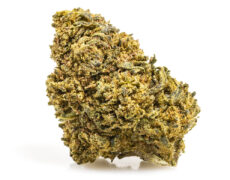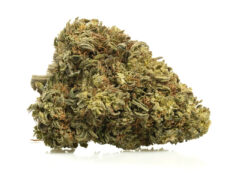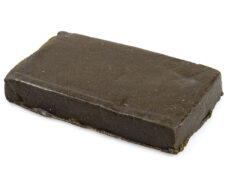Modified on: 04/01/2024
Everything you need to know about hermaphroditic marijuana
If you have decided to open this article, you would like to learn more about hermaphroditic marijuana.
Contrary to what some people might think, it is not entirely harmless because its presence in the crop could jeopardize the proper development of other plants.
Are you perhaps wondering what the reason is?
To answer this question, continue reading this article. It is definitely for you.
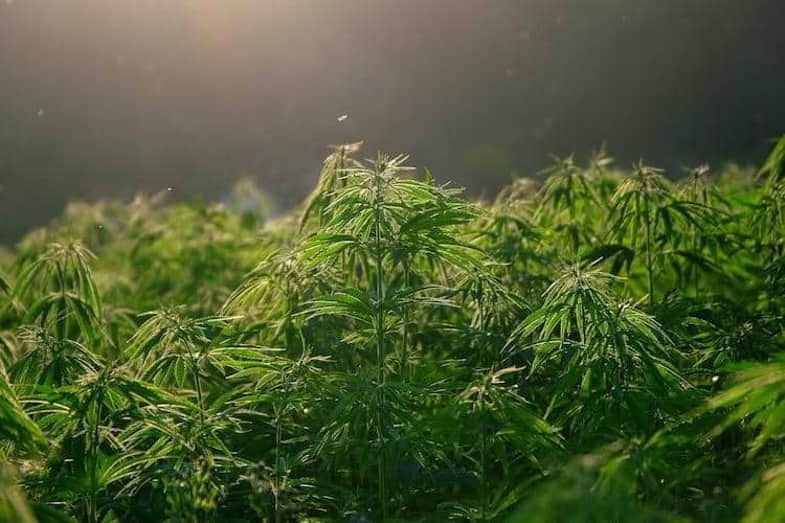

The sex of cannabis plants: hermaphrodite cannabis plant, female plants, male plants
In the world of cannabis cultivation, the sex of the plants plays a pivotal role in determining the quality and yield of the final harvest. Cannabis plants exhibit a fascinating diversity in sexual characteristics, ranging from distinctly male to female plant, and sometimes, a combination of both in the form of hermaphroditic traits.
Categorizing Cannabis Plants:
- Female Plants: These are the coveted individuals in cannabis cultivation due to their ability to produce the prized flowers containing cannabinoids. Female plants are the primary focus for growers aiming to harvest potent and seedless buds.
- Male Plants: Male cannabis plants play a crucial role in reproduction by producing pollen. However, they are generally undesirable in a cultivation setting, as their pollen can lead to seed development in female flowers, reducing the overall quality of the harvest.
- Hermaphrodite Cannabis Plants: Hermaphroditism occurs when a cannabis plant displays both male and female reproductive organs. While this is a natural feature of the cannabis plant, it is considered undesirable for growers seeking a high-quality, seedless yield.
Factors Influencing Cannabis Sex:
- Genetics: Certain cannabis strains have a genetic predisposition towards hermaphroditism. For example, some Thai Sativa strains are known for a higher likelihood of developing hermaphroditic plants.
- Environmental Stress: Cannabis plants may adopt hermaphroditic traits as a response to environmental stress during the flowering stage. Stressors include changes in light cycles, extreme temperatures, mechanical damage, and irregular watering.
Understanding the Significance of Female Cannabis Plants
In the realm of cannabis cultivation, the role of female plants holds paramount importance, especially for growers aiming to produce high-quality, seedless buds with optimal cannabinoid content.
Identification of Female Cannabis Plants:
Female Flowers: Female cannabis plants are distinguished by the development of flower clusters that contain the coveted cannabinoids sought by cultivators and consumers alike.
Bud Production: The primary goal of cultivating female plants is to encourage the development of resinous buds rich in cannabinoids, particularly THC and CBD.
Role in Seedless Bud Formation:
Seed Prevention: Female plants are preferred for bud production as they do not produce seeds unless exposed to stress factors leading to hermaphroditism.
Cannabinoid Concentration: Female plants channel their energy into cannabinoid production rather than seed development, resulting in higher concentrations of THC and CBD.
Preventing Hermaphroditism:
Feminized Seeds: Initiating the cultivation process with feminized seeds ensures that the resulting plants are overwhelmingly female, minimizing the risk of hermaphroditism.
Stress Management: Providing a stable and stress-free environment during the flowering stage helps maintain the integrity of female plants and reduces the chances of hermaphroditic traits.
Seedless Bud Production:
Unfertilized Female Flowers: By preventing female plants from being fertilized by male plants or turning hermaphroditic, growers can ensure the development of seedless buds.
High Cannabinoid Content: Unfertilized female flowers concentrate on cannabinoid production, resulting in buds with enhanced potency and desirable effects.
Strategies for Female Plant Success:
Early Detection: Regular monitoring during the flowering stage allows growers to identify and remove any hermaphroditic or male plants promptly.
Selective Breeding: Utilizing selective breeding techniques with a focus on feminized seeds helps maintain the purity of female plants in subsequent generations.
Understanding the pivotal role of female cannabis plants in bud production allows cultivators to optimize their yields and deliver products with the desired cannabinoid profiles, meeting the expectations of both medical and recreational users.
Can you get feminized seeds from a hermaphrodite?
Feminized seeds are typically obtained from selectively bred female marijuana plants, and the process involves ensuring that the resulting seeds carry only female genetic material. However, the scenario of obtaining feminized seeds from a hermaphrodite introduces complexities into the equation.
Hermaphrodite Cannabis Plants: A hermaphrodite cannabis plant possesses both male and female reproductive organs. While this dual characteristic might seem advantageous for seed production, it introduces the risk of unwanted pollination, potentially resulting in a crop with a higher seed count.
Seed Production from Hermaphrodites: If a hermaphrodite plant is allowed to develop and produce seeds, those seeds may inherit both male and female genetic material. Consequently, this could lead to unpredictable outcomes in terms of the plant’s sex and characteristics.
Feminized Seeds from Hermaphrodites: While it’s theoretically possible to collect seeds from a hermaphrodite and attempt to germinate them, the reliability of achieving feminization is questionable. Hermaphroditic marijuana plants can produce seeds with varying genetic compositions, and some may exhibit hermaphroditic traits themselves.
Challenges and Considerations:
- Genetic Stability: Seeds obtained from hermaphrodites marijuana plants may lack the stability associated with true feminized seeds bred from female plants.
- Risk of Hermaphroditism: Growing from seeds produced by hermaphrodites may increase the likelihood of encountering hermaphroditic plants in subsequent generations.
- Selective Breeding: Reliable feminized seed production often involves controlled breeding practices to ensure the purity of the female genetic line.
In conclusion, while it might be possible to obtain seeds from a hermaphrodite, relying on them for consistent feminization may lead to undesirable outcomes. Cannabis breeders typically prefer established methods, such as using known feminized seeds from reputable sources or employing advanced breeding techniques, to maintain genetic stability and predictability in their crops.
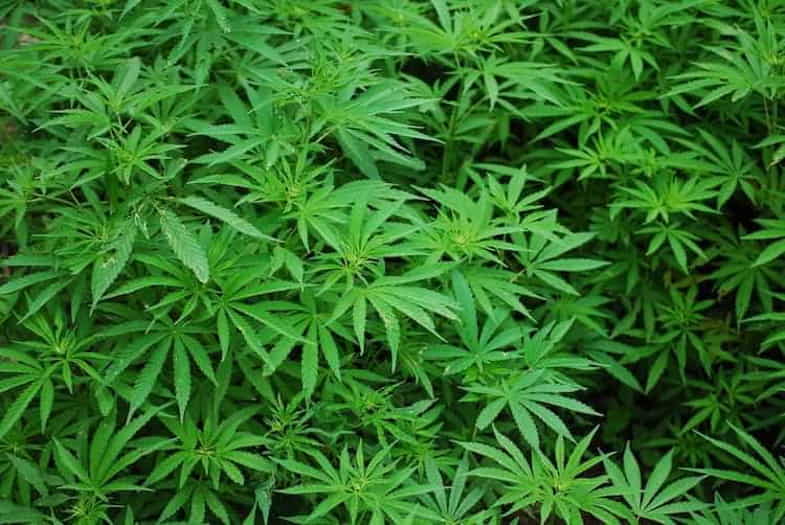

What is a hermaphrodite marijuana plant?
Hermaphrodite marijuana plants develop both male and female flowers.
While this is a natural characteristic of the cannabis plant, it is an undesirable trait when growing marijuana (CBD marijuana too) for consumption because there is an excellent possibility of obtaining a plant full of seeds, which seriously reduces the quantity and quality of the final product.
Hermaphroditism can have two origins: genetic and environmental.
Genetically, some marijuana strains are more susceptible to hermaphroditism than others; the genetic origins of the strain can explain this—Thai Sativa, for example, usually achieve a high percentage of hermaphroditic plants—or even by the technique used to produce the seeds.
Regardless of its genetic susceptibility, a marijuana plant (and CBD cannabis plant) can also become hermaphroditic due to stress.
That’s right. You read that right.
When it feels that flowering conditions are too tricky, hermaphroditism is an effective and natural way to shorten this period by pollinating its female flowers with pollen from some male clusters.
Stress, which significantly increases the risk of hermaphroditism, can be triggered by several causes, such as:
- changes in the photoperiod, in particular interruptions in the dark period during flowering;
- too much heat (> approx. 27° C);
- incorrect environmental conditions;
- too late harvesting, when the grower does not respect the deadline for harvesting his plants;
- mechanical stress: broken branches, damaged roots, pruning during flowering, etc.;
- irrigation problems (lack or excess);
- over-fertilisation;
- insects, mites, diseases;
- thermal stress (watering the plants with cold water);
- use of phytotoxic products (pesticides, fungicides).
What should a cannabis grower do to prevent the development of hermaphroditic plants?
To avoid hermaphrodite cannabis plant, the main rule is to prevent any stress during the flowering period and to limit the risks as much as possible.
In addition, plants should be pruned and staked during the growth and/or pre-flowering (elongation) phase before the buds begin to develop.
To reduce the likelihood of obtaining hermaphroditic plants, the canapiculturist should
- maintain good environmental conditions in the growing space
- ensure perfect hygiene;
- check the timers regularly;
- check the plants for insects and mites;
- water regularly with a balanced nutrient solution.
At the end of flowering, you will have to check the trichomes carefully to avoid missing the harvest deadline.
What to do when you find hermaphrodite marijuana plants?
As we have already mentioned, it is essential to carefully check the plants for male flowers right from the start of flowering.
Indeed, during this period, the male flowers are easily observable due to their yellow colour and banana shape. In addition, as we mentioned earlier, it will also be necessary to check for the presence of mites or insects, as well as mould, to avoid the most common cannabis pests.
If a plant has male and female flowers right from the start of flowering, it will have to be removed immediately from the cultivation space. Otherwise, it could pollinate the entire crop, transmitting the hermaphroditic trait to its offspring.
When the plant becomes hermaphroditic in full bloom, there are two options:
- if the plant produces only a few male flowers, the grower can remove them with a pair of tweezers (sterilized with alcohol), spray water on them and then observe the new inflorescences (or new CBD flowers);
- if the plant produces numerous male flowers, it should be removed from the cultivation space.
Alternatively, if a marijuana plant becomes hermaphroditic at the end of flowering, it should be harvested as soon as possible, i.e. before the male flowers release their pollen.
Read also: Do CBD and antidepressants interact with each other?
How to avoid hermaphrodite cannabis plants?
To prevent the development of hermaphrodite cannabis plant, it is essential to understand the factors and practices that contribute to their occurrence. Hermaphrodite cannabis plants possess both male and female reproductive organs, leading to the potential for self-pollination and seed production, which can impact the quality of the harvest. Here are key strategies to avoid hermaphrodite cannabis plants:
- Start with Quality Genetics: Begin with reputable and reliable sources for your cannabis seeds. Opt for feminized seeds, which are specifically bred to produce only female plants. Feminized seeds help eliminate the risk of hermaphrodite plants in your crop.
- Regularly Inspect Plants: Conduct routine inspections of your cannabis plants, focusing on identifying and removing any signs of hermaphroditism. Look out for the development of male flowers on female plants or any indications of both male and female reproductive parts on the same plant.
- Maintain Environmental Stability: Ensure a stable and controlled environment for your cannabis plants. Fluctuations in light cycles, temperature, and other environmental factors can stress plants, triggering the development of hermaphrodite traits. Consistency is key to preventing stress-induced hermaphroditism.
- Avoid Light Leaks: Light leaks during the flowering stage can disrupt the natural photoperiod, potentially causing stress and encouraging hermaphrodite development. Use light-tight grow spaces to prevent unintended exposure to light during the dark cycle.
- Selective Breeding: If you are breeding cannabis plants, be selective in choosing parent plants with stable and desirable traits. Avoid using hermaphrodite cannabis plants in your breeding programs to reduce the likelihood of passing on hermaphroditic tendencies to future generations.
- Monitor Nutrient Levels: Maintain a balanced and appropriate nutrient regimen for your cannabis plants. Imbalances or deficiencies can stress the plants and contribute to hermaphroditism. Regularly check and adjust nutrient levels to ensure optimal plant health.
- Remove Male Plants Promptly: If you are growing regular CBD cannabis seeds and have both male and female plants, identify and remove male plants as soon as they become evident. This prevents the release of pollen and potential fertilization of female flowers.
By adopting these practices and staying vigilant throughout the growth cycle, you can significantly reduce the risk of hermaphrodite cannabis plant and cultivate a healthy, high-quality crop.
Will a Hermie produce buds?
Yes, a hermaphrodite cannabis plant has the potential to produce buds. However, the development and quality of these buds may be influenced by various factors associated with the plant’s hermaphroditic nature.
Hermaphrodite Cannabis and Bud Production:
When a cannabis plant exhibits hermaphroditic traits, it means that it has both male and female reproductive organs. In the context of bud development:
Male and Female Flowers:
- Hermaphrodite plants can produce both male and female flower on the same plant.
- Female flower is responsible for bud development and cannabinoid production.
Bud Formation in Hermaphrodites:
- Buds formed on hermaphrodite plants may vary in quality compared to those on stable female plants.
- The presence of male flowers on the same plant poses the risk of pollen contamination, leading to seed production within the buds.
Quality Concerns:
- Buds from hermaphrodite plants may have reduced potency and quality due to the potential influence of male flowers.
Seed Development:
- Hermaphrodite plants are prone to self-pollination, resulting in seed development within the buds.
- Seeds within buds can diminish the overall quality of the harvested material.
Factors Influencing Hermaphrodite Bud Production:
Stress Conditions:
- Hermaphroditism can be triggered by stress factors, such as light interruptions, temperature fluctuations, or nutrient imbalances.
Genetic Predisposition:
- Some cannabis strains may have a higher genetic predisposition to hermaphroditism, increasing the likelihood of bud production with mixed gender traits.
Selective Breeding:
- Breeders may selectively breed for stability in feminized seeds to avoid hermaphroditic traits and ensure consistent bud quality.
While hermaphrodite cannabis plants can produce buds, the quality and desirability of these buds may be compromised by the simultaneous presence of male flowers. To ensure optimal bud production, many cultivators prefer using stable, feminized seeds from reputable sources or employing breeding practices that minimize the risk of hermaphroditism in their crops.
Conclusions
This article has tried to give a general overview of hermaphroditic marijuana and how to recognize it.
Characterized by having female and male inflorescences, this plant could pose a problem for cannabis growers because it would compromise the entire crop.
However, by considering all the factors that contribute to its development, it is possible to prevent it from impacting the growth of other marijuana plants.
If you do not want to miss the following updates, visit the JustBob website and discover all the best quality legal marijuana products, such as legal weed, CBD hashish and CBD oil.
We are waiting for you on our CBD shop online, JustBob!

